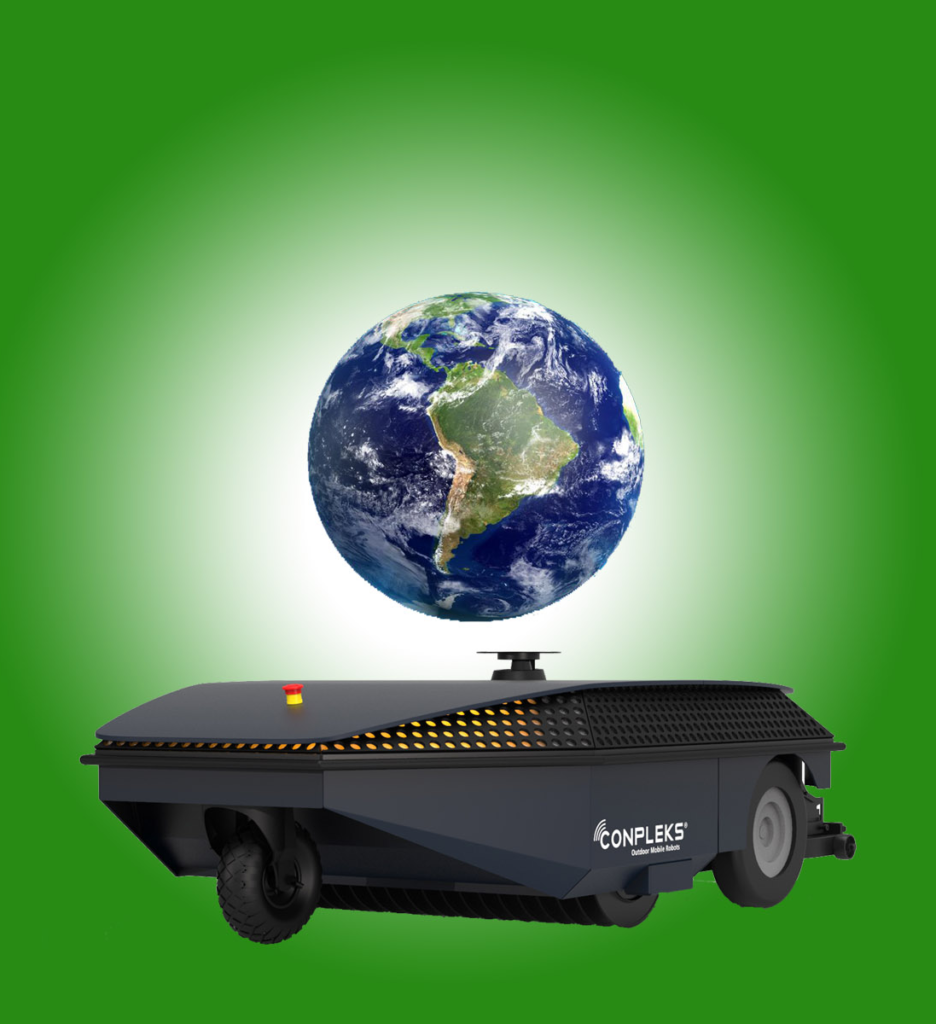Danish robots contribute to green transition
Danish robot technology is a key enabler for green transition concludes the first report ever to examine how robot, automation and drone companies in Denmark contribute to green transition.
Researchers at the University of Southern Denmark have studied how the Danish robot technology contributes to green transition, and the conclusion is clear. The Danish robot companies are contributing in many ways and to many segments especially by reducing CO2, re-using resources, optimizing production processes and replacing chemical with mechanical processes.
Recognized tendency
The result of the report doesn’t surprise Tom Simonsen, CEO at Conpleks, who has been working with outdoor, mobile robots for more than a decade. Based on his insight into the industry, he is certain that the Danish robot companies are fully aware that green transition is an important parameter especially for future solutions.
– Already in 2013, we participated in a research project that aimed to develop an electric weeding robot for agriculture. Two years later we co-developed an electric robot for line marking together with a Danish customer. Even then, the most important criteria were in fact that the robot should be emission free and noise neutral to avoid any inconvenience for the people working around the robot, explains Tom Simonsen.
The progress applies to all sizes
For Conpleks the robot evolution through the last ten years is evident, as with time the environment plays a larger and larger role in robot development regardless the size of the robot. A fact that most likely is due to both an increased number of robots for different tasks and that the robots are operating closer to and in populated areas.
 – Right now, we are working on a larger, emission free grasscutter robot. Only a few years ago a robot of this size and capacity would have been fossil, but the approach from the customers is different now. Therefore, the idea of this particular grasscutter robot arose on the basis of a demand from several municipalities, as they need non-polluting robots that shall operate side by side with people in parks and recreational areas, states Tom Simonsen.
– Right now, we are working on a larger, emission free grasscutter robot. Only a few years ago a robot of this size and capacity would have been fossil, but the approach from the customers is different now. Therefore, the idea of this particular grasscutter robot arose on the basis of a demand from several municipalities, as they need non-polluting robots that shall operate side by side with people in parks and recreational areas, states Tom Simonsen.
Researchers at the University of Southern Denmark compiled the report based on interviews with a range of robot companies, contextualizing insights with references to existing analyses and political initiatives, not least the Danish government’s National Robot Strategy published in 2020 that firmly put green transition on the industry’s agenda.
